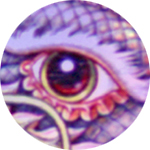Clarification
Dear Gene, Sal and others:
I have to clarify something. I have never stated that Kan Jia forms are identical to Bak Siu Lam forms, there must be some kind of misunderstanding here. I dont thinkg anyone in my family said so, may be some bad english writen work of mine lead to some misunderstanding, if so, I offer my sincere apologyes to Sal and fellows.
All I know is that one of my elder brothers, Kao Chian Tou, noticed about a kung fu family in Shandong, very close to the supposed location where it is said that Yim Kai Wun (Yan Si wen) lived. In that school, they teach a curriculum of 10 Shaolin forms, some of the forms have the same names, or similar, to the Ten Core Forms of Bak Siu Lam Moon.
Interesting thing: there was a photograph of Guruzhang there in the school, described as one of the lineage holders of that school
That is all I have read from my brother, and some time after, he was not much interested in any serious research on the subject as probably he found some weack points in the story.
So here is all I know about the subject, not any claim abou Kan Jia or any other style name. At least, not coming from Argentina.
Kindest regards
Horacio
Horacio Di Renzo
Asociacion Kai Men Kung Fu -Buenos Aires - Argentina
Formal Student of GM Chan Kowk Wai
http://www.kaimen.com.ar





 Reply With Quote
Reply With Quote


 "Zhengzhou is an ancient city with 5300 years of recorded history. During 3600 of those years, on five separate occasions, it served as the national capital." (see
"Zhengzhou is an ancient city with 5300 years of recorded history. During 3600 of those years, on five separate occasions, it served as the national capital." (see 




